6 Best V Ups Alternatives (with Pictures!)
With its comparatively large range of motion and relatively unstable position at the apex of the movement, V-ups ensure that the core is worked to the fullest degree.
Despite these benefits, V-ups are not the perfect core exercise, and indeed can present a risk of lower back injuries alongside a host of other disadvantages.
Good V Ups Alternatives include:
- Elbow to Knee Crunches
- Lying Leg Raises
- Bicycle Crunches
- Frog Crunches
- U Crunches
- Windshield Wipers
What are V-Ups and Why Should They be Alternated Out?
V-ups are a bodyweight isolation exercise where the exerciser forms the shape of a “V” by raising both their arms and legs towards each other as they lie on their back. This is done so as to target the abdominal muscles and other core muscle groups in a moderately intense fashion.
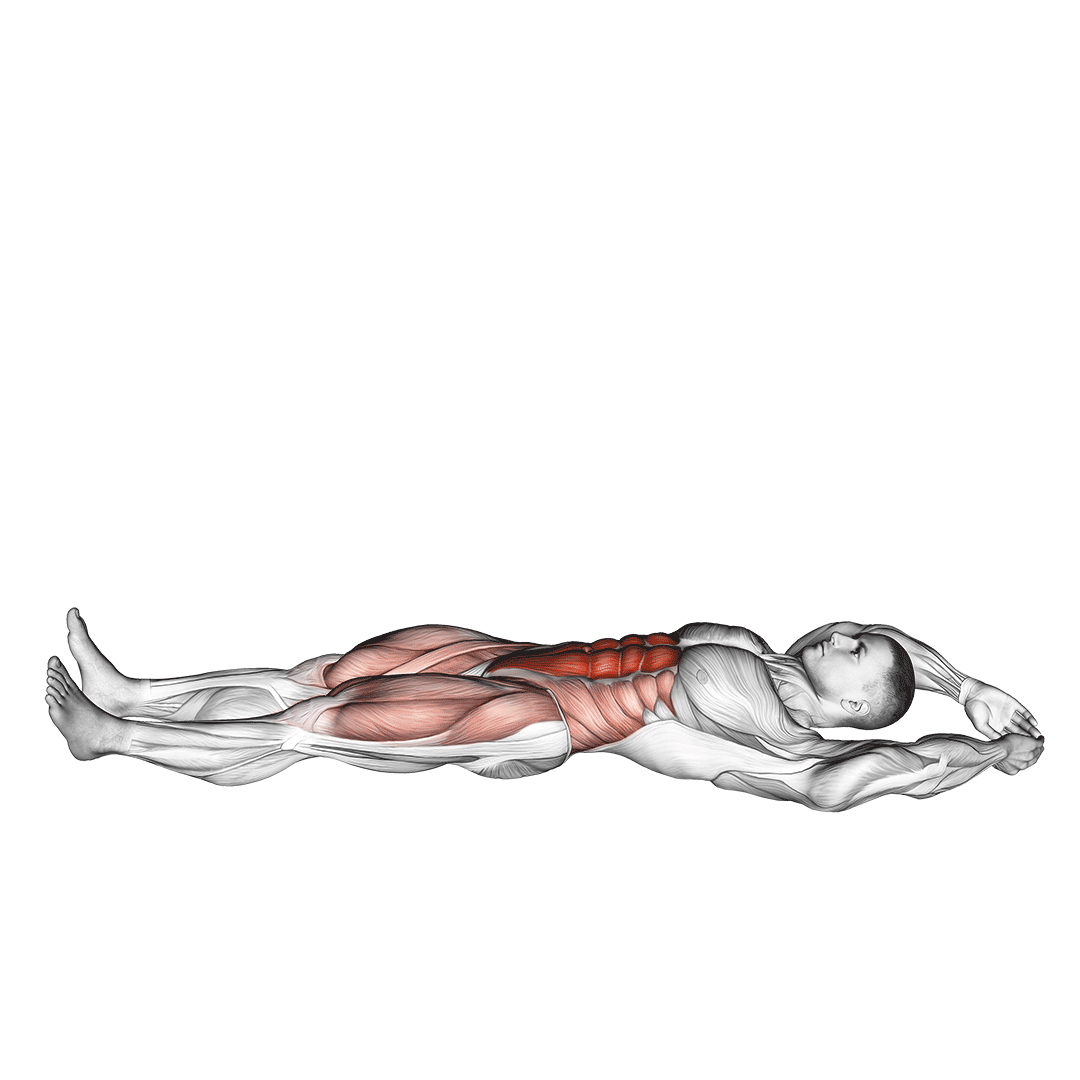
Despite the intensity of each rep, V-ups are nonetheless considered suitable for the majority of healthy individuals and are even comparable to more common core training exercises like the hanging leg raise or conventional crunch.
However, this doesn’t make them the perfect core exercise - and indeed, many exercisers can stand to benefit from greater emphasis on the weaker parts of their core, or otherwise upping the overall intensity of the workout itself.
Why Substitute Out V-Ups?
Although V-ups are considered to be quite safe, performing them to excess or with less than ideal form can increase the risk of lower back and spine injuries - quite similarly to the risks seen in conventional sit-ups.

Furthermore, V-ups are not the most specialized of core exercises, and indeed prioritize the abdominal muscles over the obliques, erector spinae and other core muscles.
Finally, V-ups are also impossible to conveniently load with greater resistance. This can lead to a plateau or stall in the exerciser’s progress, and requires them to perform increasingly unreasonable amounts of volume to reach optimal training intensity.
V Ups Alternatives
1. Elbow-to-Knee Crunches
The first alternative exercise to consider when substituting out V-ups is the elbow-to-knee crunch.
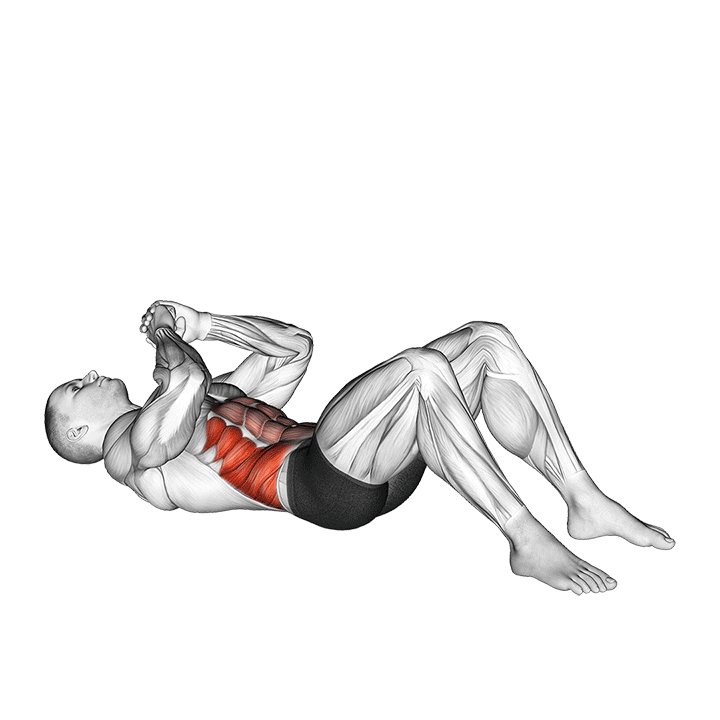
As its name implies, this particular variation of crunch involves the exerciser performing a tilted crunch so as to draw the elbow of one side to the knee of the opposite side - with the legs also being raised straight into the air for greater lower abdominal engagement.
Elbow-to-knee crunches are nearly identical to V-ups in terms of stance, general muscular recruitment and their applicability in a training program.
Benefits as a V-Up Alternative Exercise
Like the V-up, the elbow-to-knee crunch is performed so as to comprehensively target both the upper and lower section of the abdominal muscles.
However, unlike the former, the elbow-to-knee crunch is considerably more dynamic, allows for a faster tempo and will target the obliques to a greater degree.
All of these equate to a more intense and effective exercise as a whole - as well as an even more comprehensive method of training the core muscles.
How-to:
To perform a repetition of the elbow-to-knee crunch, the exerciser will lie flat on their back with their hands supporting the base of the skull. Throughout the repetition, the navel should be pulled “towards the spine” and the neck kept loose but not extended.

From this stance, the exerciser raises both legs off the floor, facing their soles horizontally. For greater intensity, the legs may be fully extended off the ground. Otherwise, simply keep both legs bent at the knees.
With the legs raised, the exerciser then performs a crunch as they try to connect one elbow to the knee on the opposite side of the body, twisting the upper torso slightly as they do so. The same knee should also be drawn further backwards towards the elbow, extending the opposite leg for balance.
Once the elbow and knee make contact, the exerciser rapidly shifts sides and draws the other elbow to the opposite knee as well. Repeat as many times as needed until the set is complete.
2. Lying Leg Raises
In cases where the V-up is only present in a workout plan due to its greater emphasis on the lower abs, one can achieve much the same purpose in a more efficient manner by substituting with lying leg raises.
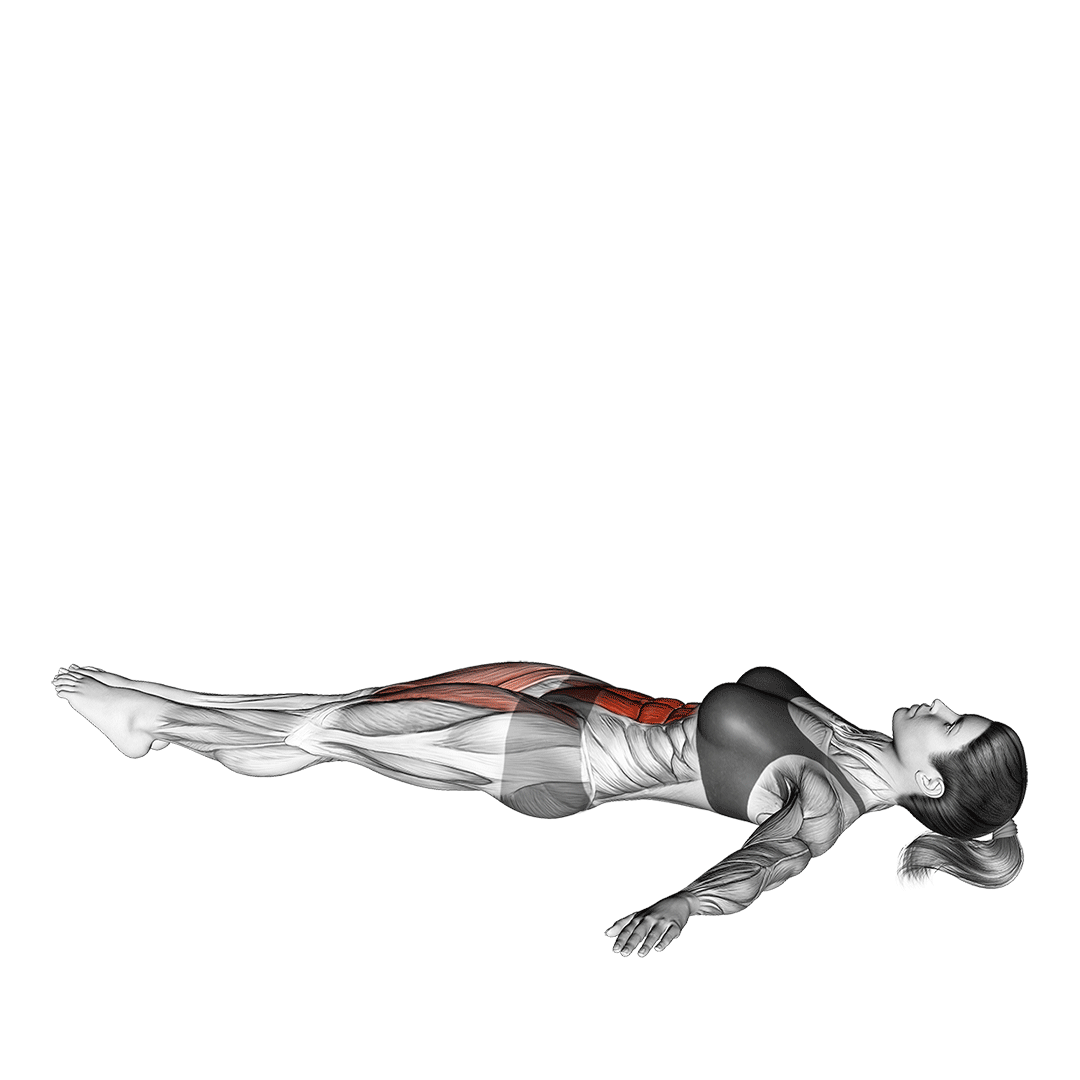
Like V-ups, lying leg raises are a core isolation exercise requiring no equipment or advanced exercise experience to perform.
However, rather than raising the upper torso off the floor to target the upper abdominals, lying leg raises only raise the legs into the air - better isolating the lower abdominal muscles instead.
Benefits as a V-Up Alternative Exercise
Apart from being more efficient and specified than V-ups, the lying leg raise is also considerably easier on the lower back and requires far less back flexibility to perform.
Furthermore, lifters with issues isolating the lower section of their core during compound exercises can familiarize themselves through the lying leg raise. Likewise, the lying leg raise can also help correct pelvic tilt issues in specific cases where the lifter is not familiar with proper hip orientation.
How-to:
To perform a repetition of lying leg raises, the exerciser will begin by first lying flat on their back with their head resting on the floor, arms splayed flat along the ground beside the body for greater stability.
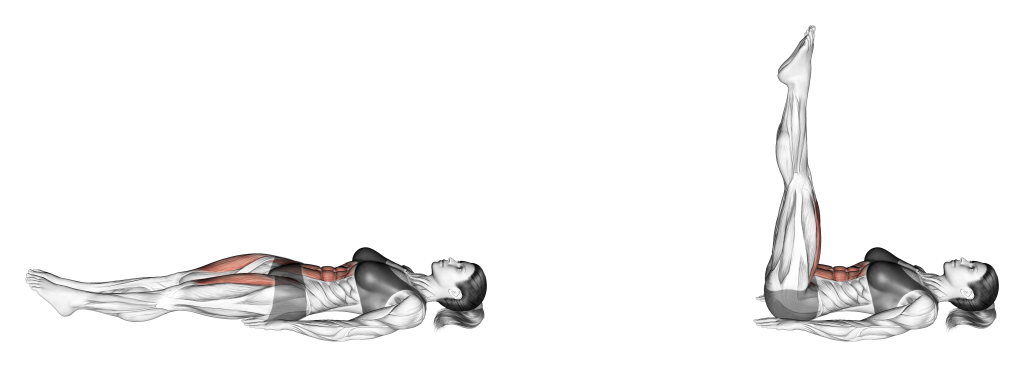
Then, keeping the legs straight and pressing the lower back into the floor, the exerciser contracts their abdominal muscles and raises their legs off the ground - still fully extended. The exercise may be made more difficult by spreading the legs slightly so that they are not touching.
Once the legs are raised as high as possible without the glutes leaving the floor, the exerciser then slowly reverses the motion, keeping tension in their abs throughout this eccentric phase.
When the legs are flat on the ground once more, the repetition is considered complete.
For sets of multiple repetitions, avoid returning the legs to the floor and instead stop just shy of them touching. This will help create a lengthy time under tension and truly work the core to a greater extent.
3. Bicycle Crunches
For a more dynamic core exercise performed at a distinctly faster tempo than V-ups, bicycle crunches are one of the better alternatives to pick.
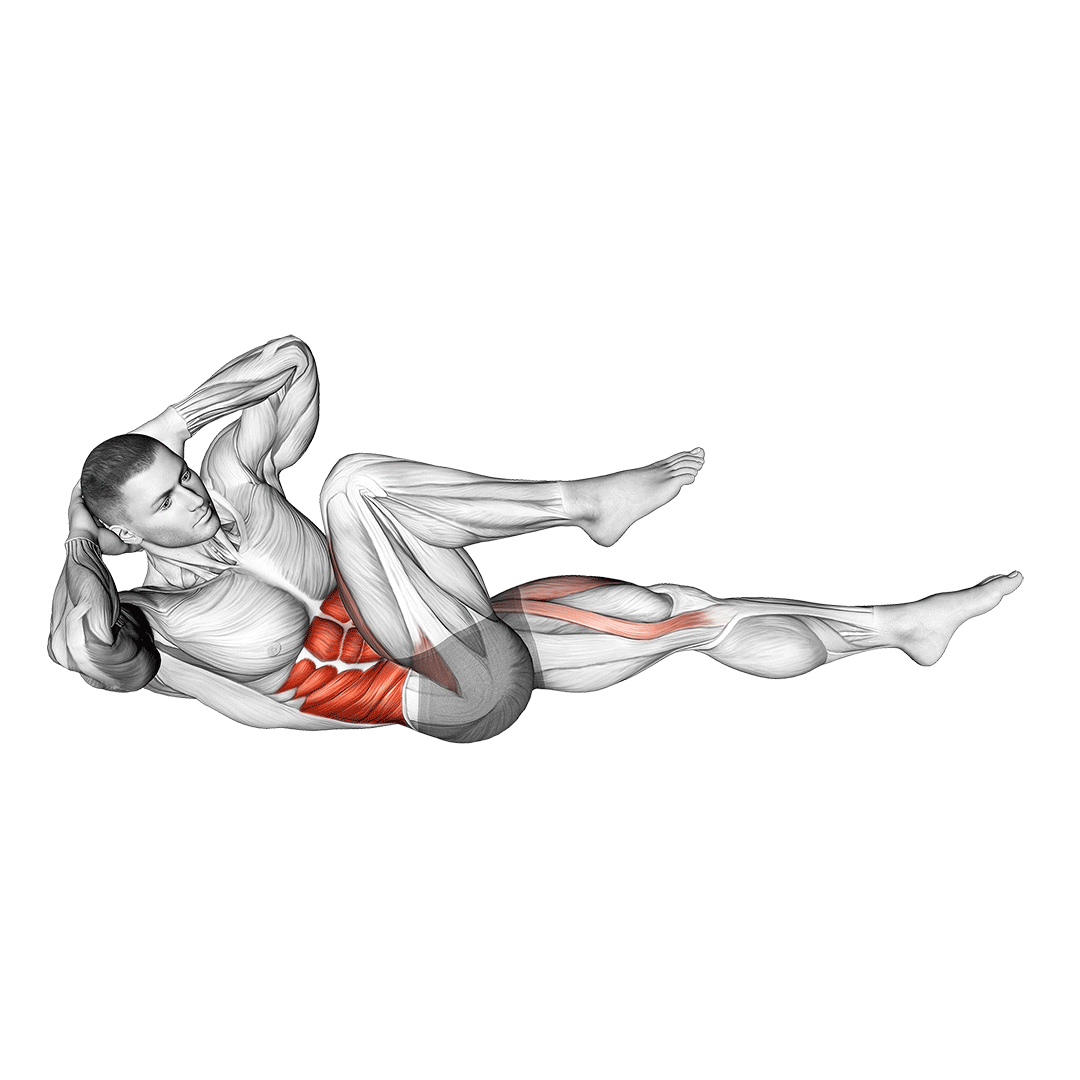
As one can likely guess from its name, bicycle crunches involve the exerciser assuming a standard crunch position before also raising their legs into the air and rapidly bending them towards the torso, as if riding a bicycle.
Bicycle crunches are most similar to V-ups as far as muscular recruitment goes - only, rather than the arms being extended over the head, the hands are placed behind it as if performing an elbow-to-knee crunch. This allows for targeting much the same muscles to a greater level of intensity.
Benefits as a V-Up Alternative Exercise
Apart from targeting the same muscles as V-ups in a more challenging manner, bicycle crunches are also occasionally used for building explosiveness, power, rhythm and coordination in athletes that require such skills.
Even for non-competitive athletes, the bicycle crunch is excellent as a V-up progression exercise if greater emphasis on the obliques, an overall more intense exercise, or greater caloric expenditure is needed.
How-to:
To perform a repetition of the bicycle crunch, the exerciser will begin in a standard crunch stance flat on their back with the hands supported the back of the skull.

Now in a crunch position, the exerciser will proceed to perform a standard crunch by contracting their core and raising their upper back off the ground. As they do so, both legs should also be raised approximately 1-2 feet off the ground, knees bent.
Keeping the upper back off the floor, the exerciser then rapidly draws one knee towards their head as they twist the upper torso towards the knee, shortening the distance between the elbow and the working knee.
Once a full range of motion is reached without the mid-back being drawn off the ground, the exerciser rapidly performs the same motion with the opposite side of the body - upper back still off the floor through abdominal strength alone.
Repeat as many times as needed to complete the set before returning to a lying position.
4. Frog Crunches
Frog crunches are yet another variation of crunch that feature a similar emphasis on the two halves of the abdominal muscles as V-ups do.
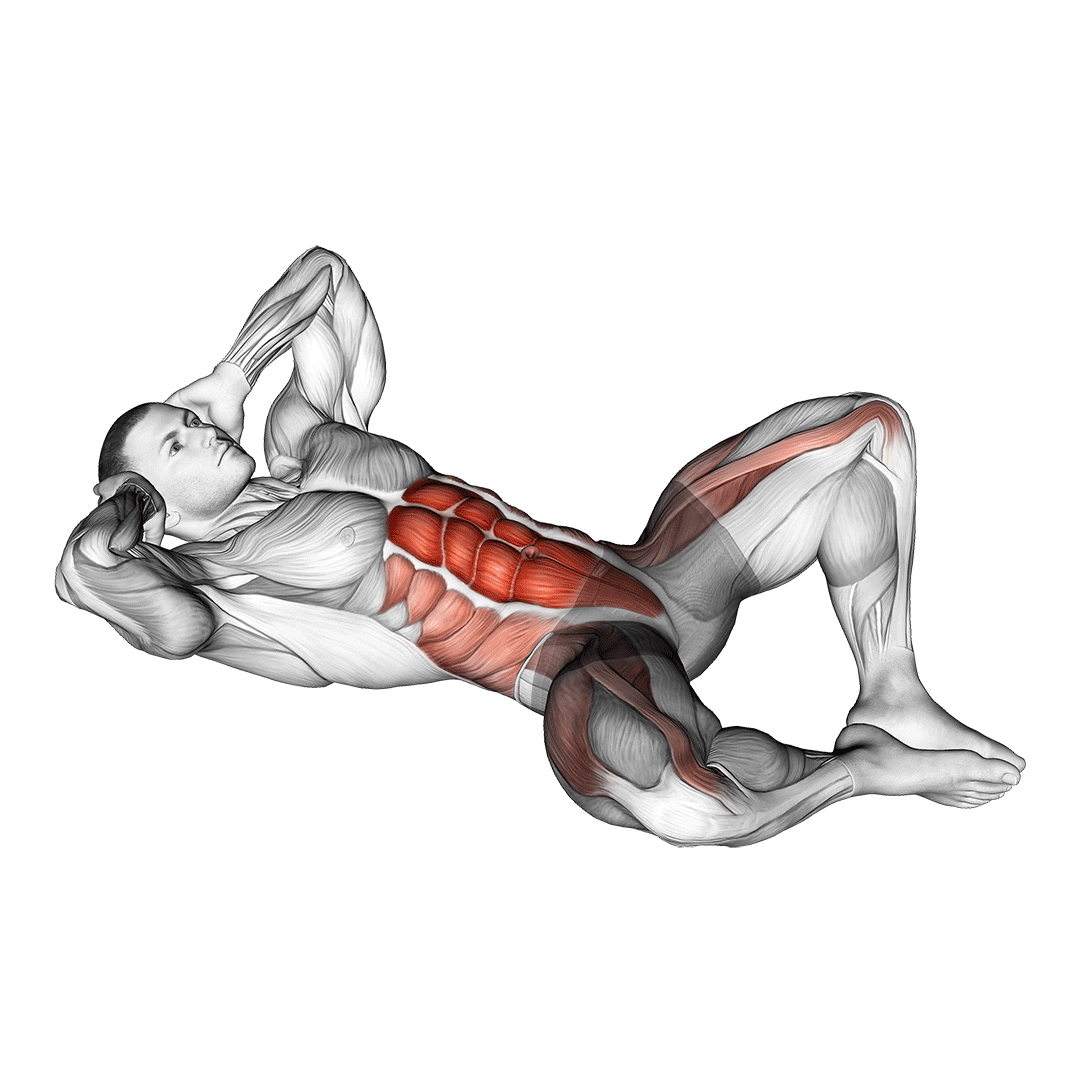
Only, rather than the legs being fully extended as they are raised, the exerciser instead presses the soles of their feet together.
This creates a greater emphasis on the hip flexor muscles and is excellent for building overall hip and leg stability alongside that of the core.
Benefits as a V-Up Alternative Exercise
As mentioned previously, frog crunches are excellent for targeting the general core structures of the lower body alongside the hip flexors, even more so than V-ups themselves.
In addition, those that have difficulty maintaining the fully extended position of the legs throughout the entire range of motion of the V-up will find the frog crunch to be somewhat easier - so long as their hip flexors are strong enough as well.
How-to:
To perform a frog crunch, the exerciser will lie on their back in a conventional crunch position, keeping their lower back flat as they pull their navel towards their spine.
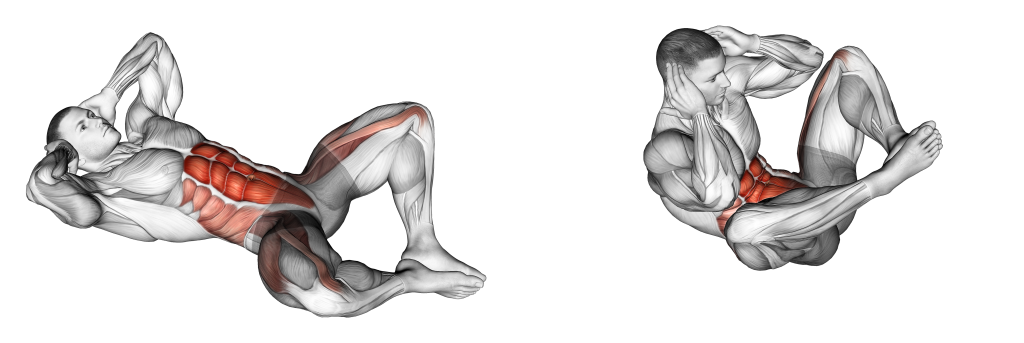
Then, pressing the soles of their feet together and their hands behind their head, the exerciser will contract their core and curl their body into a ball - raising their knees towards their chest while simultaneously performing a crunch.
Once the upper back and knees are completely clear off the floor and the elbows are nearly touching the thighs, the exerciser slowly reverses the motion and lowers themselves back to the ground - thereby completing the repetition.
If performing multiple repetitions in the set, keep the feet pressed together once you’ve returned to the floor so as to maintain tension in the muscles.
5. U Crunches
An exercise often confused with V-ups - the U crunch is visually similar but involves a somewhat reduced risk of lower back injury by ensuring that the middle back stays on the floor, as is standard for most crunches.
Nonetheless, due to the similarity of their mechanics, both the U crunch and V-up may be performed interchangeably and will work much the same muscles to similar degrees.
Benefits as a V-Up Alternative Exercise
Apart from being easier on the lower back and having a slightly lower risk of injury, U crunches will also target the lower abs and hip flexors to a slightly greater degree as the legs will be raised to a larger range than V-ups call for.
How-to:
To perform a repetition of the U crunch, the exerciser will begin by first entering a standard crunch position, keeping the legs fully extended with the arms also straight over the head and the lower back flat against the ground.
From this position, the exerciser then contracts their core muscles and draws both their upper back and their legs off the ground towards each other.
The arms should follow the movement of the upper back, rising upwards as the upper back leaves the floor and continuing until they are parallel to the legs.
With both the legs and arms raised into a near vertical position (enough to almost touch the feet with the fingers), the exerciser slowly lowers themselves back towards the floor, keeping tension in their core as they do so.
Once lying flat on the ground, the repetition is considered complete.
6. Windshield Wipers
Although not quite an abdominal isolation exercise as V-ups are meant to be, windshield wipers are nonetheless quite effective at targeting the entirety of the abdominal muscles in a large range of motion - much like their predecessor exercise.
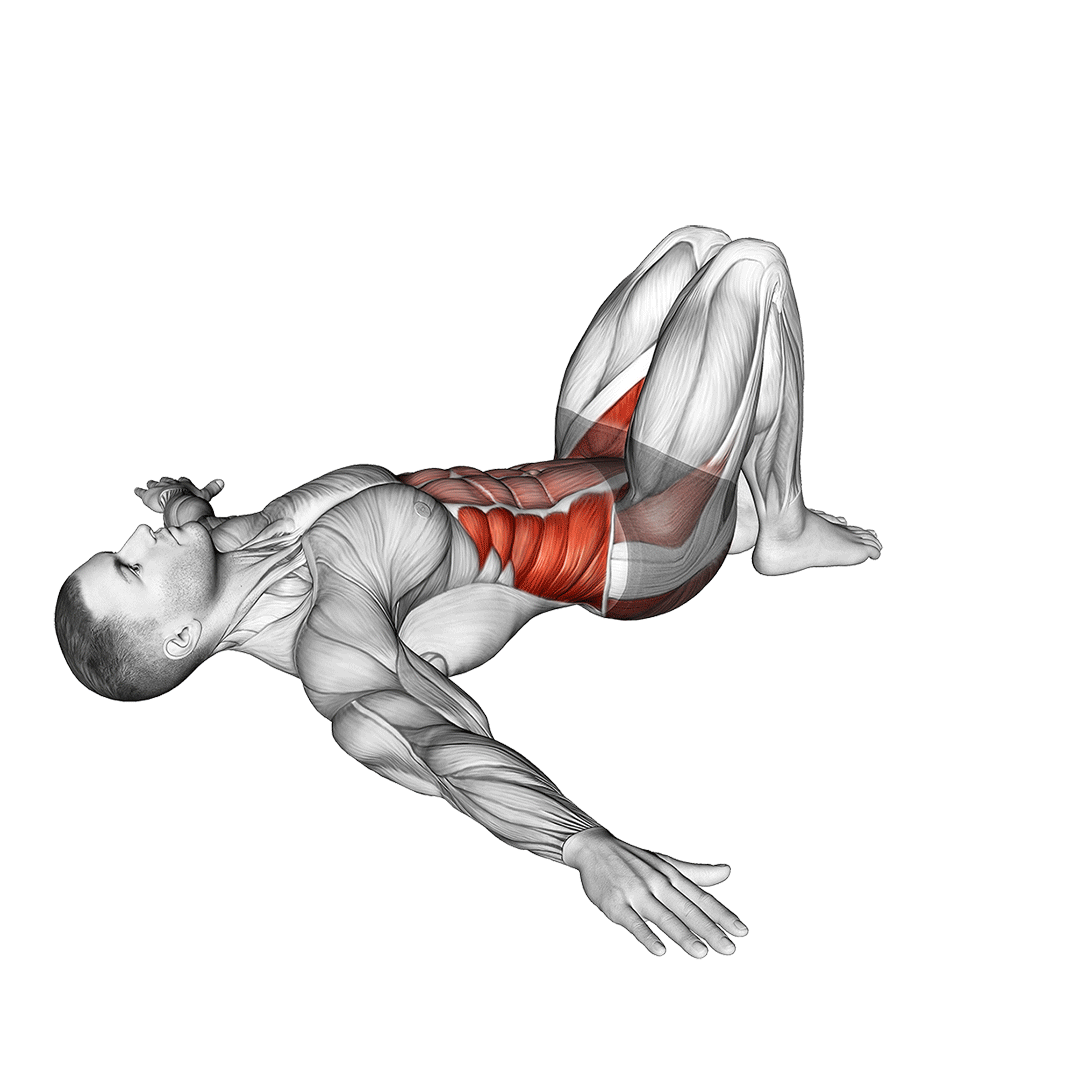
Much like their namesake car component, the windshield wiper exercise involves the performer swinging their extended legs in a radial motion from one side to the other, keeping the back and hips against the ground as they do so.
This will target the obliques to a significant level while also sharing much the same benefits as V-ups - all without the same risk of injury.
Benefits as a V-Up Alternative Exercise
Larger range of motion and greater oblique emphasis aside, windshield wipers are also far more effective for building core stability and strength as it is far more difficult to swing the legs from one side to the other.
One can even take things a step further by performing windshield wipers while hanging from a pull-up bar. Doing so will maximize isometric strength development and build a truly powerful set of core muscles.
How-to:
To perform a repetition of windshield wipers, the exerciser will begin by first lying flat on their back with their arms spread out along the floor for stability. A pillow may be used to help support the head if needed.

Then, raising the legs straight up into the air, the exerciser slowly rotates them at the hips to one side, contracting the core to hold the legs aloft, keep them together and to press the middle and upper back into the floor.
The glutes and part of the lower back may raise off the ground during this exercise - of which is entirely fine so long as the rest of the back remains against the ground.
Once reaching the limit of their range of motion to one side, the exerciser then contracts their core even further and rotates their legs in the opposite direction. Repeat as many times as necessary until the set is complete.
References
1. Lucas, Vincent., Daws, Kristina. (SEPTEMBER 13 2018) Ab Exercises Ultimate Collection - The World's Best Abs Workout: Abdominal Exercises For Men, For Women and For Beginners to Advanced Levels - The Only Stomach Exercise Program You Need. N.p.: Imagination Books, 2018. ISBN: 9781928458418, 1928458416
2. Piering AW, Janowski AP, Wehrenberg WB, Moore MT, Snyder AC. Electromyographic analysis of four popular abdominal exercises. J Athl Train. 1993 Summer;28(2):120-6. PMID: 16558218; PMCID: PMC1317695.
